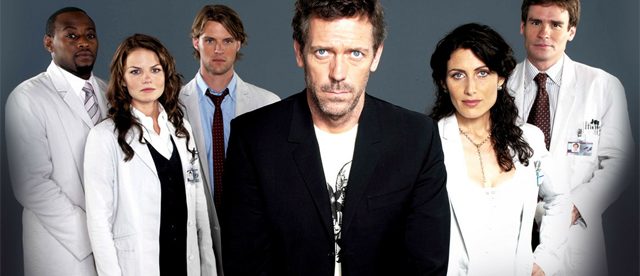The Life-Saving Power of Television

Actor Chris Robinson probably wasn’t a household name in the mid-1980s, but to a certain segment of the population, he was well-known enough and, more importantly, trusted. He earned that trust — or, rather, “earned” that trust — because, starting in 1976, he portrayed Dr. Rick Webber on the iconic soap opera, General Hospital. Despite Dr. Webber’s bio being centered on romantic trysts and helping cover up a murder, viewers still thought of him as a medical professional.
So it kind of made sense that, in 1984, a cough syrup brand named Vicks signed Robinson up to be a celebrity spokesperson. Robinson, in a TV ad campaign for Vicks Formula 44, endorsed the product, stating “I’m not a doctor, but I play one on TV.” Despite the fact that pretending to be a doctor (and an unethical one at that) doesn’t qualify one to give medical advice, the ad was successful for Vicks, and the “I’m not a doctor but…” line has entered our cultural lexicon.
But really, when looking for medical advice, you probably shouldn’t be listening to actors portraying doctors. First of all, they (probably) didn’t go to medical school. And second, being fiction, TV shows are perfectly allowed to make stuff up. Television doctors aren’t a substitute for, or even a complement to, real doctors.
Unless, maybe, the character is Dr. House, played by Hugh Laurie on the show House. Just ask a board-certified, 100-percent real medical professional named Juergen Schaefer.
If you’re unfamiliar with the show House, the title character, Dr. Gregory House, is a brilliant diagnostician who is also an awful person on almost every other level. What makes House different than most other hospital dramas, though, is that most episodes focus on a mystery — Dr. House and his team are world-renowned for their ability to diagnose strange symptom sets, and viewers get to watch as they work through a differential diagnosis on their way to the (almost always) correct answer. And the cause is almost always something weird.
And while House, MD is fiction, it turns out that the TV show did a really good job with those differential diagnoses, at least insofar as one of Dr. Schaefer’s patients was concerned. In 2014, a 55-year-old patient came to Dr. Schaefer with an odd mix of symptoms, as summarized by the New York Times:
He had low thyroid hormone levels, inflammation of his esophagus and fever of unknown origin. His loss of vision was so profound he was almost blind, and his loss of hearing so severe he was almost deaf. Most perilous of all, his heart had weakened so much it could not pump hard enough to supply blood to his body.
And this had been going on, to various degrees, for three years. The patient’s previous doctors were befuddled and the ailing man was left without a diagnosis. Luckily, Dr. Schaefer had seen this before: on television. It turned out that Dr. House had a similar patient with similar symptoms, and in the fictional case, the cause was cobalt poisoning. Specifically, the patient had previously received a hip replacement, and Dr. House figured out that the metal-on-metal joint had begun to deteriorate, releasing toxic amounts of cobalt into the patient’s bloodstream.
And guess who else also had a metal hip replacement? Dr. Schaefer’s patient. Same symptoms, same medical history, and same diagnosis.
This wasn’t a stroke of TV-viewing luck, though. Dr. Schaefer, per TIME, “isn’t just a casual House fan. No, he actually teaches medical students using House as a way to explain rare diseases, so the episode was fresh in his memory. And he literally wrote the book on how to apply House the fictional television show to real life medical practice. It’s called Housemedizin: Die Diagnosen von ‘Dr. House’” which translates to “Household Medicine: The Diagnoses of ‘Dr. House.'” You can get it on Amazon, but buyer beware — despite the above, it shouldn’t be used (by laypeople especially!) for actual medical advice.
Unless, maybe, if you have an artificial hip.
Bonus fact: In the mid-1960s, more than four-dozen people in Quebec came down with what appeared to be cases of alcoholic cardiomyopathy (heart failure brought on by long-term alcohol abuse). That didn’t add up — while most of the patients were heavy drinkers, it was strange for this to happen localized to one area. The cause? Cobalt poisoning. All of the afflicted people drank the same brand of beer, and that beer came from the same manufacturing plant. The plant had been using a cobalt-based additive to help stabilize the foam from when the beer was poured, but accidentally used ten times as much as it should have.
From the Archives: When Playing a Doctor on TV is good enough: A fake doctor becomes a real medical hero, briefly. And the bonus fact is about the General Hospital guy.
